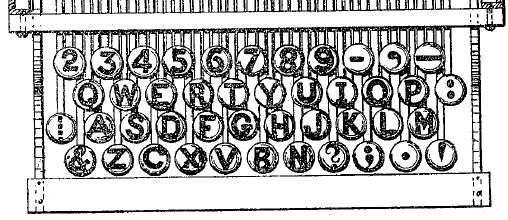Is there a secret to longevity? This health expert says 1,000% yes
In the era of social media, post-COVID, and with mental health at the forefront, a shift is taking […]

Whether typing on a laptop, tablet, or smartphone, the majority of us utilise the QWERTY keyboard layout on a daily basis. However, not many are aware of its unexpected past. Contrary to popular belief, the QWERTY layout was not intended to be efficient. Indeed, it was designed with the purpose of slowing down typing!
The origins of this odd design decision can be traced back to the typewriter’s early years. Here are some reasons why this popular layout was created and why, despite the digital age, it is still in use.
American inventor Christopher Latham Sholes was working on the typewriter’s perfection in the 1860s. One odd issue with the early models of these mechanical writing machines was that if successive letters were typed too quickly in succession, the metal typebars that impacted the paper would frequently jam.
Sholes created a keyboard layout that divided frequently used letter pairs in order to avoid these frequent jams. This lessened the possibility of typebar collisions. The outcome? The now-familiar QWERTY layout purposefully slowed down typing in order to preserve machine efficiency.
In fact, speed was an issue in the first typewriters. The sensitive gear would not be able to keep up with a typist who was too fast. The QWERTY design reduced mechanical issues and jams by requiring users to type more slowly. The key to making typewriters useful for everyday use was this trade-off: slower speed for smoother operation.
Most typewriters switched to the QWERTY layout by default after it became popular. People became used to the layout after manufacturers standardised it. Due to simplicity and familiarity, QWERTY continued to be the most widely used typewriter even after the first mechanical problems were resolved with better models.
Alternative layouts have been tried, such as the Dvorak Simplified Keyboard, which places the most frequently used letters under the strongest fingers in an effort to increase typing productivity. But because QWERTY is so widely used, transitioning has become challenging from a psychological and practical standpoint.
Mechanical constraints that necessitate a slower layout are no longer present in today’s keyboards, whether they be found on laptops, desktop computers, or smartphones. However, the QWERTY layout is still in use, mostly due to familiarity and habit. Since QWERTY still “works,” most people don’t see the need to switch, and it might be difficult to teach people to use a different layout on a broad scale.
While QWERTY is the most common layout in English-speaking countries, other languages use variations. For example:
AZERTY is popular in France.
QWERTZ is common in Germany and other parts of Central Europe.
These layouts reflect the different frequency of letters and accents used in various languages.
The odd past of the QWERTY keyboard serves as a reminder that not all technological advancements are made with optimal efficiency in mind. Rather, it changes as a result of user behaviours, limitations, and concessions. The QWERTY layout is ingrained in our daily lives, despite the fact that new keyboards no longer need to slow us down—proof that occasionally tradition triumphs over reason.
Therefore, keep in mind that this well-known layout was initially intended to keep things steady and sluggish the next time you text on your phone or computer. Ironically, we now depend on it to type as quickly as we can!

In the era of social media, post-COVID, and with mental health at the forefront, a shift is taking […]

With its fast speeds and revolutionary potential, 5G stands out as a noteworthy milestone in the field of […]